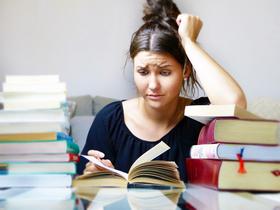Community college completion rates have been a concern since President Obama made these two-year schools a focus in efforts to increase the number of college graduates in the U.S. The truth is that most community colleges currently see relatively low completion rates, due to a myriad of factors working against students attending these schools. The good news is there are many ideas on the table for improving community college completion rates nationwide. Check out these 10 ideas for increasing community college retention that is slowly being put into practice by community colleges across the country.
This video from The Philanthropic Roundtable opines that "It takes more than money to keep low-income community college students enrolled."
Adding Dual-Enrollment Programs
Dual-enrollment programs allow high school students to earn college credits before they earn their high school diplomas. In some cases, the college courses are offered free of charge, depending on whether the state is willing to pick up the tab through special student funding. Other schools charge a nominal tuition fee, which is much lower than what high school graduates can expect to pay. Students that earn college credits during high school are much more likely to see their degree program through to completion.
Collecting Data
The American Council on Education encourages community colleges to join the initiative, “Achieving the Dream: Community Colleges Count.” The initiative uses measurable data to promote higher student success, particularly among low-income and minority students. Around 130 community colleges nationwide have signed onto the initiative thus far. Some of the schools involved are already showing impressive improvement in student outcomes.
Increasing Accountability
The Chronicle of Higher Education reports the Voluntary Framework of Accountability was piloted two years ago to see how national accountability standards could improve student outcomes at community colleges. This year, the program has been made available to all community colleges nationwide. A variety of measures are included in the framework, including student readiness for college coursework, completion of degree programs, workforce training, and employment. By holding community colleges accountable for student success, colleges may be more likely to implement programs and services that increase student completion rates.
Preparing Future Students
Many students need to be educated about the basics of college while they are still in high school. Students that have not had family members who attended college have little information about what the application and enrollment process is. Many are also unsure of whether they will be prepared for the rigors of a college curriculum. Local high schools and community groups can help prepare future college students with programs that educate teens about their educational options, according to the Knight Foundation.
Redesigning Remedial Education
In a separate article, the Chronicle of Higher Education reports that the majority of community college students who require remedial education at the beginning of their college careers drop out before completing a degree program. Unfortunately, studies also show that the majority of incoming community college students require some sort of remedial education to prepare for the rigors of college coursework. These stats lead to an assumption that remedial education must be redesigned, rather than eliminated entirely, to ensure students get the support and preparation they need without sacrificing their odds of success.
Partnering with High Schools
The American Council on Education also recommends that community colleges improve partnerships with local high schools to ensure students are ready for the rigors of college after high school graduation. This measure is especially essential for high-risk students, such as first-generation college students, minority students, and students from low-income families. By working with high schools, the pathway to college can be a smoother transition for all students in the local community.
This video reports on how a community college is using data to improve graduation rates.
Partnering with Local Businesses
Many students look to community college as a means of preparing for a future career. To help students achieve that end, community colleges can create partnerships with local businesses. These partnerships will ensure community colleges tailor their training programs to the unique needs of the local workforce. They can also ensure students that who complete degree and certificate programs will have potential employment options after graduation.
Increasing Financial Aid
Financial barriers are another reason many students are unable to complete their community college degree, according to the American Council on Education. To help students in this area, community colleges could make more financial aid available to assist eligible students. The second piece to the financial puzzle is to ensure the students that need the assistance most are the ones actually applying for the aid. This often requires a statewide approach to educating students about the aid available and assisting them with the application process.
Enhancing Student Advising
Because many community college students are the first in their families to attend college, assistance, and support throughout the college experience can increase their odds of completion and success. Enhanced student advising that allows students to partner with an advisor throughout their community college career can be an effective way to help students overcome obstacles and persevere to completion.
Establishing More Transfer Agreements
A significant portion of community college students enters a two-year school with the intention of eventually transferring to a four-year program. Transfer agreements between community colleges and four-year schools nearby increase the odds that students will be successful in this endeavor. By ensuring a smooth transition for students, they are more likely to complete their two-year degree, knowing the next step of the process will be feasible.
Improving completion rates at community colleges is not an easy task, but it is far from impossible. With many viable options to help students succeed, these steps could increase completion rates at community colleges nationwide, while ensuring students at two-year schools get the most from their educational opportunities.
Questions? Contact us on Facebook. @communitycollegereview














